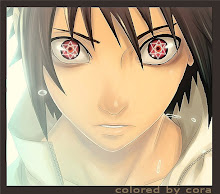I learn about regional geography of China. I know the China's regional
2009年4月28日星期二
Regional Geography
I learn about regional geography of China. I know the China's regional
2009年4月27日星期一
Climate Continued!

Its very cool!

Is very cool.
The ocean was around it.
Maybe is in the North America.
Maybe is ALBERTA,NORTHWEST TERRITORIES,SASKATCHFWAN.
I learn about continent and some worlds.
2009年4月26日星期日
The Interior Plains - Climate
The climate of the Interior Plains is a continental climate. This means the temperature of this region is affected by this region's location in the heart or center of the continent.
1. What is a continent? Find a picture of a continent.Post it here. Explain in 3-5 sentences what you see.
2. Find a map of all the continents in the world. Post it here. Explain what you see in 3-5 sentences.
3. Can you list some continents in the world? Write as many as you can find.Since this region is in the center of the continent, it is far from the ocean. The ocean helps to keep a moderate climate. Without it, this region has a climate of extremes. It has long, hot summers and cold winters.
Agrica,Asia,Australia,Antrctica,South America,Morth America,Europe.
4. Translate the word "extreme" into Chinese or Korean.
極端
5. What did you learn today? How does this connect to the last lesson? Explain in 5-8 sentences.
I learn about the continents in the world. And I know what continents in the world. Is very interesting.
Thank you for finishing your lesson for today!Thank you for posting your last lesson on the weekend!
2009年4月23日星期四
4. Translate the word "elevation", "flat", "level" into Chinese or Korean. Post it here.
5. How many levels of elevation is in this region?
8. Translate the word "population" into Chinese or Korean.
10. Why are water routes important to people? Explain in 3-5 sentences.
Because if you don't drink water you will die.
I learn about life is valuable.
2009年4月22日星期三
Please use complete sentences to explain your answer.
1. What are the regions of Canada we have learned about?
I learn many things in this class. Like place, trees.......
2. Choose one region, and tell me how your life would be like in this region. Use 5-8 sentences.
Qubec. Because I can only rember this place in my memory.
3. Look at your older posts, what vocabulary words have I asked you to translate? List all of them here.
Lake Sturgeon-湖鲟鱼
saint-圣
geese-鹅
vegetation-植被
maple tree-枫叶树
beech trees-山毛榉
hickory tree-山核桃树
oak tree-橡树
spruce tree-云杉树
pine tree-松树
cedar tree-雪松树
escarpment-断崖 , 绝壁
glaciation-由冰形成的川.
2009年4月21日星期二
2.Where is the St. Lawrence River in Canada? What provinces are around this river?
4. Find a picture of Lake Sturgeon and post it. Explain what you see in 3-5 sentences.
7. Translate "saint" into Chinese or Korean.
9. Translate "geese" into Chinese or Korean.
Bonus
2009年4月19日星期日
植被
2. There are a lot of broad-leafed forests in this region. What do these forests look like? Find a picture, post it and explain it in 3-5 sentence. What do you see?
枫叶树
6. There are beech trees as well. Find a picture of a beech tree. Post it.

山毛榉
8. There are also Hickory trees in this region. Find a picture of a hickory tree. Post it.

山核桃树
10. In other places of the region, the vegetation is a mixed forest. It has a mix of both decidous and coniferous trees, such as maple, beech, oak, ash, and birch, along with spruce, fir, pine and cedar. Find a picture of a mixed forest. Post it! Explain what "mixed" means!

橡树
13. What is a spruce tree. Find a picture. Post it.

14. What is the Chinese or Korean word for it?
云杉树
15. Find a picture of a pine tree. Post it.

雪松树
19. What did you learn from this lesson? Explain in 8-12 sentences.
2009年4月13日星期一
My homework! YEAH!!
Picture from www.eman-rese.ca/.../tomlin/images/fig36.gif QuestionsThe Great Lakes - St.
断崖 , 绝壁
Superior,Huron,Michigan,Erie,Ontario.


























